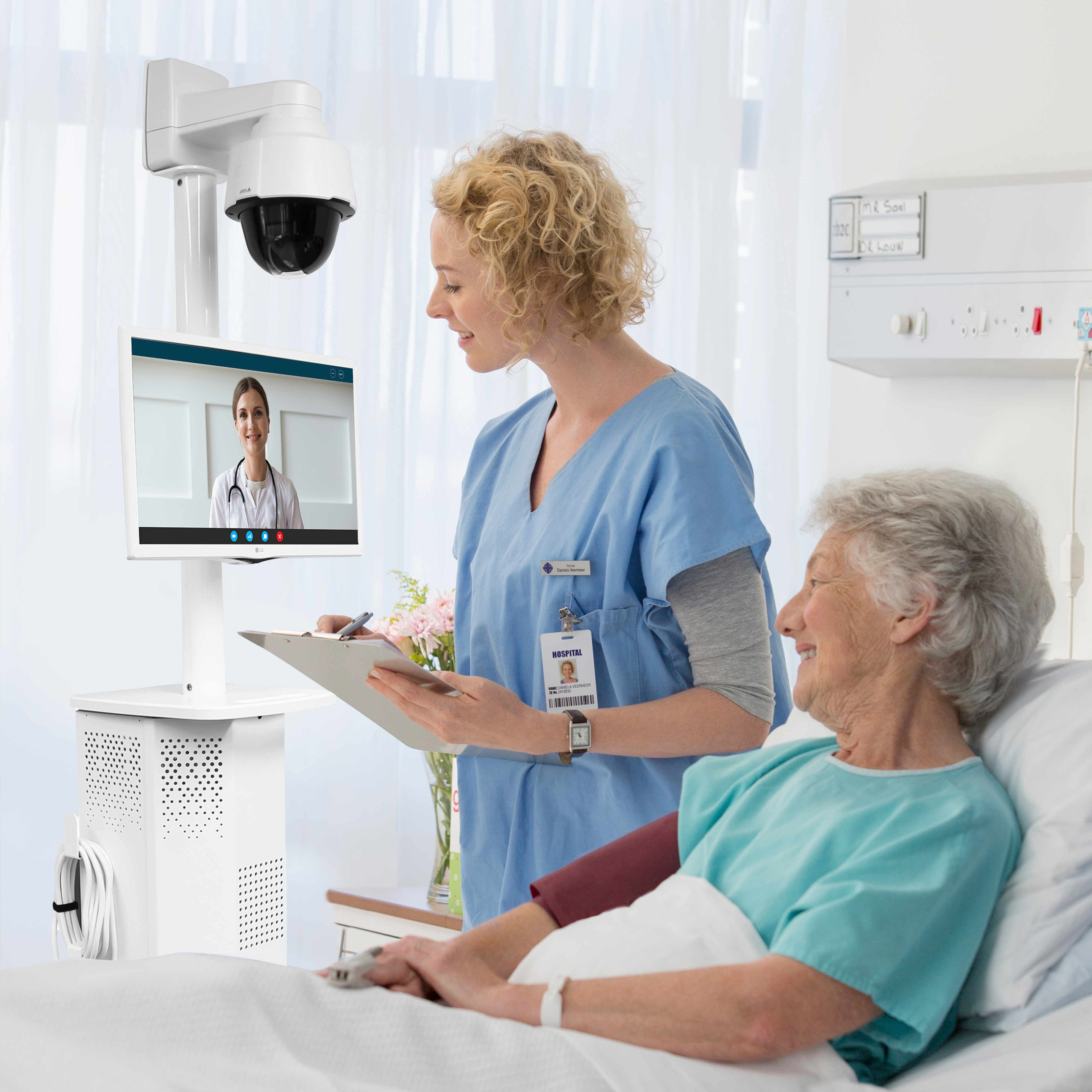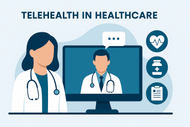The Complete List of Essential Telehealth Equipment
By First Products on Jul 2nd 2025
Benefits of Medical Grade Tablets in Healthcare
When it comes to expanding access to medical care, support, and education, telehealth remains one of the most valuable pathways for modern healthcare providers.
But what does it take to launch an effective telehealth program? And what specialized telehealth equipment do you need to ensure secure, high-quality patient interactions from a distance?
What is Telehealth?
Before you invest in new equipment, it’s essential to clarify what telehealth includes. Many people use “telehealth” and “telemedicine” interchangeably, but they’re not exactly the same.
- Telemedicine focuses on using digital communications technologies to conduct remote patient appointments for diagnosis and treatment.
- Telehealth is broader. It includes telemedicine services plus remote health assessments, preventive care, patient education, and even administrative activities — all delivered through secure digital technologies.
How Telehealth Services Are Delivered

Depending on the type of services offered, providers can deliver telehealth programs through:
- Live and Interactive Videoconferencing — Real-time, two-way audiovisual connections between patients and their healthcare providers.
- Store-and-Forward Videoconferencing — Recorded videos, images, or health data are securely shared with a remote provider for review.
- Remote Patient Monitoring (RPM) — Digital tools record vital signs or other personal health information at home, then transmit the data to a provider.
- Mobile Health (mHealth) — Health services and information delivered through mobile devices such as smartphones and tablets.
Why Telehealth Matters More Than Ever
Telehealth expands care access for underserved populations — especially in rural or remote areas where specialists may be scarce. It also improves convenience for patients with mobility issues, time constraints, or limited transportation options.
Beyond accessibility, telehealth boosts communication and care coordination. Tools like electronic medical records (EMRs), video conferencing, and remote monitoring help keep the entire care team connected.
In recent years, the COVID-19 pandemic accelerated telehealth adoption. One survey found that 97% of practitioners expanded their telehealth services — and many of these programs will remain in place as patients continue to expect flexible, secure virtual care options.
Essential Telehealth Equipment & Technology
Your exact telehealth equipment needs will depend on the services you plan to offer, but here’s a basic list to build a successful program:
Core Connectivity & Devices
- Stable Internet Connection — Wired or wireless broadband to stream secure, high-definition video.
- Private Exam Room or Office — A quiet, clean, private space to ensure professional virtual visits.
- Video Camera — High-quality webcams or PTZ (pan-tilt-zoom) cameras for clear visuals.
- HD Audio Devices — Quality microphones, headsets, or external speakers to ensure crisp, clear audio.
- Interactive Screens — Touchscreens or standard monitors with keyboard and mouse options.
Software & Monitoring Tools
- Videoconferencing Software — User-friendly, HIPAA-compliant software for appointments, team meetings, and training.
- Remote Patient Monitoring Kits — Internet-enabled scales, blood pressure cuffs, glucometers, and other at-home devices to collect and share vital signs.
Peripheral Medical Devices
- Digital Stethoscopes & Otoscopes — Tools that can transmit images and data in real time or store and forward for review.
- Telemedicine Carts — All-in-one mobile workstations equipped with the necessary devices, peripherals, and secure connectivity. For example, First's Mov-it Telemedicine Carts offer flexible, secure, HIPAA-compliant solutions for any setting.

Staying HIPAA Compliant with Telehealth
Patient privacy and data security are critical when delivering telehealth services. The HIPAA Security Rule requires that:
- Only authorized users can access ePHI (electronic protected health information).
- Secure communications must protect the integrity of ePHI.
- Systems must monitor communications to prevent breaches.
Always verify that your telehealth technology vendors are HIPAA compliant and sign a Business Associate Agreement (BAA) that outlines:
- What patient information the vendor can access.
- The security measures they use.
- How they will handle potential data breaches.
Innovative Telehealth Solutions from First Healthcare
At First Products, we partner with providers nationwide to help design and implement effective telehealth programs. From telemedicine carts and tablet roll stands to EMR/EHR charting workstations, our solutions are built for mobility, flexibility, and compliance.
With over 80 years of experience serving healthcare professionals, we’re ready to help you find — or build — the perfect-fit solution to deliver high-quality virtual care that improves access, satisfaction, and outcomes.

Get Started with a Complimentary Demo
Ready to expand your telehealth services with secure, high-performance equipment? Contact First Healthcare today at 800.854.8304 to arrange a complimentary demo and see how our solutions can support your practice.
